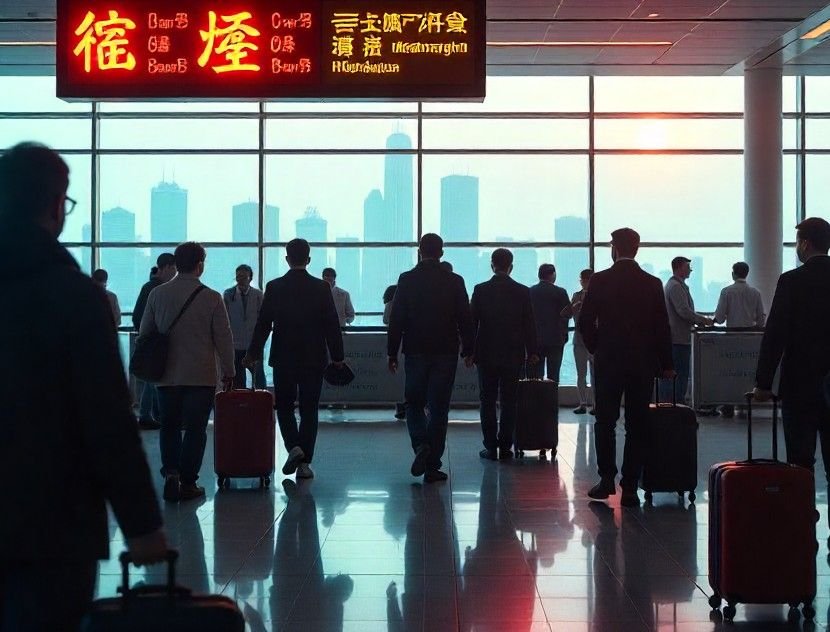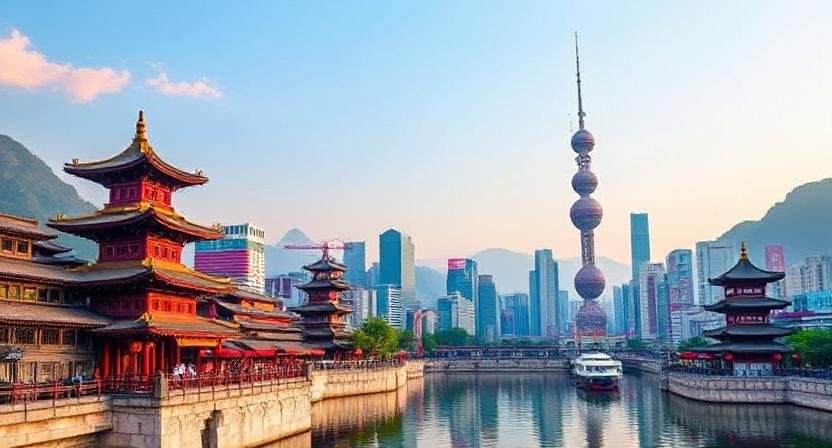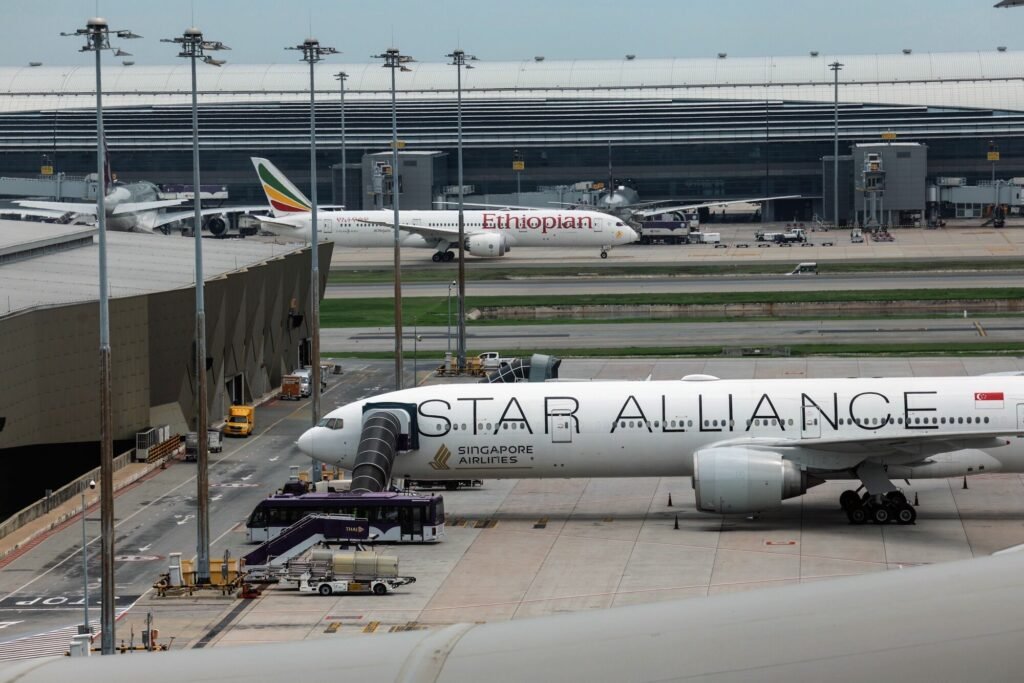Asia Travel Pulse
Now in Beijing, Shanghai, and Beyond, Shocking China Travel Restrictions Could Impact Your Next Trip, What Tourists Must Know Right Now

Tuesday, July 22, 2025
On heritage lined seafront Essex for miles of blue-flag coastline in all directions town since now threatened closure for contravening some govts list in a whose who of UKs feebly succoring glitter 1895 then town s even most photo bandstand waits for: The Iconic: Bandstand 2019 Southend-on-sea. Architectural 1935 Georgina street-Modus Even ‘wedding cake’ Listed II Town s last Bandstand street-1 of under 160 bandstands street this country where still use public performers.
Historical Charm Meets Modern Crisis
Eastbourne Bandstand The semi-circular Bandstand with its famous blue dome, was opened in 1935 and is one of the most instantly recognisable features of Eastbourne seafront. Brixton Not that you need an excuse to go to Brixton, but this one has been called out as one of the UK’s best by Tripadvisor– one for fans of 1,600 capacity gigs and cultural epicentres. What’s emerged is a hopping spot for those traspyhty visitors in search of live entertainment by the water.
But the beachside attraction is now under threat, a CED report into the construction of the structure, written for Eastbourne Borough Council, has said. The alarm of the report is rather less equivocal: “Structures are now also believed to be in an advanced state of decay and critically destabilised.”
Demolition Threat leaves Eastbourne holiday makers in a fury
The CED report paints a grim picture: putting a band-aid over it to last through one, perhaps two more safe seasons, or cased-managed divestment, or worse – demolition. The paragraph is a point as well as a document. “What it eventually all comes down to is breakage and throwaway and rot and structural failure.”
The cynical-proposed shift of its businesses is in fact about twisting the arms of the tea and tat shops and hoteliers that rely on the tourism Eastbourne to stay afloat; the heritage-huffers and puffers who seem to think the pier is there’s, when the pier is there’s town’s waterfront and they wouldn’t want anything shut down in there town even if they didn’t use it (they don’t, of course, they use the Hamptons), and those for whom this is there reliable old: because, unlike a carpark on the promenade, the pier actually is part of there routine (because, unlike a car park on the promenade, the pier’s a perma- fixture of there Sunday morning strolls.
Transfer Update!! Council Respond With Brave Overhual Plans
The operator of the disputed project, the Eastbourne Borough Council, in turn, has worked speedily to reassure visitors. With no option to tear it down, Cllrs say they want to transform the “iconic” draw back from its ruins with a £1.1m overhaul in the hope of reinvigorating the area.
In an extraordinary concerted effort plan by the authorities, the council wants every roof and canopy on south-facing shelters ripped out to reveal uncharted territory for the first time. “All of which adds up to the confidence, for everyone who’s ever been to the Bandstand, that they can keep going to summer music nights like this, for generations to come.
Heritage Tourism, and Parochial Pride, Is at Stake
Local shops depend on heritage tourism; with that support, the very structure of the bandstand becomes a load-bearing question. The council emphasizes that the main building and stage where acts are performed are not in danger, but that attention should be devoted to areas like the lower colonnade and upper colonnades. And despite the fact that local authorities have spent almost a £1m on the monument already, between that and 2019, it appears they are throwing everything at this monument to make sure it is passed down with them to the next generation.
It All Adds Up to Decades-Worth of Coastal Weathering.
The report compiles nearly a century of weather events at the coast, including damage from winter storms dating back to 1982. It had rotted away over the years and was just as overdue a clean-up.
(To rub salt into civic pride, Eastbourne Borough Council had written to central government earlier asking for funding to turn it into a heritageventure, and suffered a humiliating knockback.) Efforts are underway to convince the government to pony up the cash to save this cherished feature of the coast.
Tourism Revival and Transport Boost
Great news for day-trippers – there is now a direct train service between Eastbourne and London. “The axing of this lifeline transport service in 2020 and its re-instatement would (assuming approval is granted) be a ‘giant step’ towards sustainability in the continued interest of Eastbourne as an accessible weekend break for those residing out in the Capital and a show of recovery confidence in local business and tourism purveyors all round.
By this Lawrence Clarke memorial, of 1991; Eastbourne’s most famous landmark in it’s most critical year yet.
‘It’s a bit in limbo at present, with Eastbourne coming up to the busy summer season.’ A tourist instinctively bows her head, a historian shakes his, and local officials juggle some hard choices. But given the plans for a lively reflurry of maldevelopment itching to happen behind it despite its very Morecambe Bay-esqe apocalyptic structural warnings, it could have parish wide ramifications for the future of Eastbourne- one of the UK’s more polished seaside town dung heaps.
And for those who visit and many who live in the town, they can only hope that this old beach bandstand, a joyous, faded time-warped artefact of daft seaside days of yore, keeps trying to hit that note with generations of holidaymakers to come.
Eastbourne east sussex bandstand a crossroads centenary share_default Population of: 99,412: Coordinates: Latitude: 50.76 Longitude: 0.22: Post town: EASTBOURNE: S1 LocationEastbourne s population of 84,000 is well served with eduation facilities from nurseries to colleges of higher education.
A neo-Grec confection joins the riot in Leslie Rosevere’s makeover of the Eastbourne seafront for 1935 from a pav for tea-dunking to a pie of cream and coloured faience – the seafront was stretched to fit the former population of over 3,500 (though health and safety at one point in the 20th century limited this to 1,600). When it opened its mile of golden fins (completely covering the minerals beneath) in a semicircle whose circumference alone exceeded that of sumptuous Blackpool’s Pleasure Beach, 10,000 people streamed through the 28July 1935 to date sponsons (the only in Britain) and, excepting a time in the 60s when it could do little right (so it is today, with the various military bands and big band nights and Proms tribute shows) whether it was rock and roll, Branson tribute, the big top is thriven as the very blood of coast entertainment.
And So: Here Is the Long-Promised Winter 2025 Renovation Plan
With more than 100 concerts held in a record year at the site in 2024/25, work has already started on the essential restoration (£1.1m from council funds through the council-funded winter 2025 project focusing purely on colonnades and shelter roofs and on £750K worth of repair work to the stages, which has already been completed) meaning the council’s total repair and restoration commitment to the building is now close to £1.85M since 2019.
The upper balconies will shut, at least for the time being, though as many as 530 fans will populate the central arena — the same number as in 2024— and the promenade will remain accessible throughout the season. Safety hoardings would “ensure fans are not at risk” and works would start “immediately” after the curtain falls on the summer blockbusting shows, the spokesperson continued.
Missive From the Future Raises Stakes
Despite some attentions the CED structural engineers warned in a recent report that the bandstand was falling apart and on the verge of collapse at any time from rust or falling debris. The report sounded a somber note: Without a dramatic intervention, the site was facing “inescapable structural failure” that might lead to a managed decline of, or even the demolition of, large portions of Plymouth.
Council Pushback and Community Strength
It says the Wealden District Council “would be unable to support” the demolition of the main building and the stage, and that the council had “committed significant capital expenditure to this project” and “has a vision” to keep it long term. “They’re not going to let people down yet and I’d also like to reassure people that our commitment to the Bandstand is as strong as it ever has been,” added Cllr Jenny Williams. “Either way… it’s still possible to have the site reopened in spring of 2026 with a partial, elongated or truncated colonnade, or with the demolition of the colonnades.
the bandstand trust does its bit, too— in the form of public appeals for private donations and support through a membership scheme also— to ensure that concerts, and other heritage activities, continue.
Havas Apple Car Upset: Target heritage payment clawed back There is no target heritage payment.
Funding woes have persisted. Unsuccessful historyThe Round-Up reformed to ride again in January 2023 Est- don’t you just love the fact that the three old birds of Democracy had just paid to have the walls re-built on the The Round-Up The fortress and bandstand …. then ‘central government’ offered the Authority £26.5 million for them and the place was refused, why? Oh, I forgot, they’d just been paid not too long before that anyway. Rather than backing away, councillors are gearing up to fight for funding to bring it back to life even more.
Museum closed, and so were the tourists
Meanwhile, cuts in local authority funding caused the Eastbourne Heritage Centre to close in April 00. The loss underlines the financial pressures on the town’s cultural infrastructure, despite plans to move that collection elsewhere.
Why Travellers Should Care
But for anyone who has dodged to the beach for their traditional holiday, the Bandstand is not just a concert enabler but, rather, a vibrant, living part of that seaside life many of us cherish. Its military bands, tribute nights and fireworks will carry on until October, ploughing on regardless as it tries to draw in the tourists while its doors are still open for the refurb before them.
From the summer of 2026, there will be exciting new sights, with open-air colonnades and new infrastructure in place, offering an authentic British waterfront experience.
Final Take: There Goes Heritage Down The Coastal Zone
100 year old Bandstand – Eastbourne, UK 100 year Old Bandstand in the heart of a UK seaside town. In the meantime, as we again take part in a decades-long piece of preservation, it is still a place we are worth visiting — at summer concerts in 2025 toward a grand reopen in 2026. For everybody who misses the past or likes their musically live by the coast then yesteryears or yesterday’s is very much alive and kicking in the ever climbing cultural hotspot – and whether it’s the rotting decadence of local Eastbourne music royalty or a lesson in how to be a superstar that can stand the test of time – come visit future past– it’s worth it.
Tags: Beijing, Business Travel, business travel China risks, china, China travel advisory, China travel restrictions, China Travel Safety, Chinese Travel Restrictions, Exit ban China, Exit Bans, foreign nationals, foreign nationals travel ban, geopolitical tensions China, international business, International travel, international travel China, Shanghai, travel disruptions, travel disruptions China, Travel safety China, Wells Fargo, Wells Fargo banker
Asia Travel Pulse
Luxury Travel Market in Asia Pacific Set for Continued Growth as Connections Luxury Asia Pacific Event Debuts in Tokyo with High-End Networking and Cultural Immersion Opportunities

Wednesday, August 6, 2025
The luxury travel sector across the Asia Pacific is set to keep growing strong, fuelled by rising personal wealth, new travel tastes, and a lively craving for customized, premium journeys. The first Connections Luxury Asia Pacific 2025 event hitting Tokyo is a clear sign of this momentum. It will pull together more than 120 of the finest travel experts for focused networking, private one-on-one talks, and hands-on cultural deep dives. With luxury tourism in the region on track to increase at 8.6% each year until 2030, this first-of-its-kind gathering is a perfect opportunity to build connections, catch the latest sector shifts, and capture the fast-growing high-net-worth tourist market that spans the entire Asia Pacific.
As the luxury travel industry continues its remarkable expansion across Asia Pacific, a pivotal event is poised to take place this October. The Connections Luxury Asia Pacific 2025, set in Tokyo, Japan, from October 5 to 8, is slated to be one of the most anticipated gatherings for the region’s top-tier travel professionals. This exclusive event, organized in partnership with the Tokyo Convention & Visitors Bureau, is set to create unparalleled opportunities for networking, collaboration, and the sharing of insights among the industry’s elite players.
For the first time, the Connections Luxury Asia Pacific event will unite senior decision-makers, luxury travel suppliers, and influential travel agencies from across the globe. With over 120 top-level executives participating, the event promises to be a strategic platform for forging long-term partnerships and discussing the future of luxury tourism in the Asia Pacific region.
A Strategic Convergence for Luxury Travel Professionals
The Connections Luxury Asia Pacific 2025 is more than just a typical trade show. It serves as a high-level forum where the finest travel professionals come together to engage in meaningful, pre-scheduled, one-to-one meetings. These private sessions are designed to foster collaboration between luxury travel suppliers and travel agencies that cater to high-net-worth individuals (HNWIs). With an increasingly affluent clientele in the Asia Pacific, the demand for bespoke, tailored travel experiences is reaching new heights. This event offers the ideal setting to align these needs with the offerings of luxury suppliers from around the world.
At a time when the luxury tourism market is forecast to grow at an 8.6% annual rate through 2030, according to Tourism Economics, the Connections Luxury Asia Pacific event aligns perfectly with the region’s rapid development. As the Asia Pacific luxury market was valued at approximately $270 billion in 2023, the event will focus on expanding the region’s reach and harnessing opportunities from this lucrative sector. The event will showcase the latest trends, from ultra-personalized itineraries to exclusive travel experiences that cater to the desires of the region’s wealthiest travelers.
Prestigious Venues, Cultural Immersion, and Networking Opportunities
Held at some of Tokyo’s most luxurious venues, the Connections Luxury Asia Pacific event will take place at esteemed properties such as the JW Marriott Hotel Tokyo, Fairmont Tokyo, Happo-En, and The Capitol Hotel Tokyu. These venues offer a perfect blend of modern sophistication and traditional Japanese elegance, setting the tone for meaningful business discussions in an exceptional environment. The Hotel Chinzanso Tokyo will also host select buyers, offering them the opportunity to experience the finest hospitality that Tokyo has to offer.
While business meetings are the core of the event, there will also be opportunities for cultural immersion. Japan’s rich heritage, combined with its modernity, will be on full display, as guests participate in curated cultural experiences. These activities will allow international travel professionals to connect with Tokyo’s history, art, and cuisine, further solidifying the region’s importance as a destination for affluent travelers seeking immersive, luxury experiences.
The combination of strategic networking and cultural exposure will provide participants with the knowledge and tools necessary to capitalize on the growing demand for high-end travel experiences in the Asia Pacific region.
Exploring Asia Pacific’s Booming Luxury Tourism Market
The luxury tourism sector in Asia Pacific is experiencing an unprecedented surge in demand. The region, home to some of the wealthiest individuals globally, has become a focal point for high-net-worth travelers seeking customized, exclusive travel experiences. According to a 2023 report by Tourism Economics, Asia Pacific’s luxury travel market is expected to reach new heights over the next decade. The increasing number of ultra-wealthy individuals in countries like China, India, Japan, and South Korea has driven the demand for more tailored, luxurious travel offerings.
As long-haul travel becomes more accessible and affluent travelers seek more personalized and exclusive services, the region’s luxury travel professionals are working hard to meet these growing needs. The Connections Luxury Asia Pacific event offers a platform for these professionals to collaborate and showcase their offerings to a high-caliber audience.
The demand for exclusive services is growing rapidly across various sectors, including private jet charters, yacht rentals, luxury cruises, and luxury hotels. Travelers are no longer content with standard offerings; they seek unique, one-of-a-kind experiences that deliver both luxury and personalization.
One key trend driving this growth is the rising popularity of wellness tourism. As affluent travelers look for ways to rejuvenate both physically and mentally, wellness retreats, eco-friendly resorts, and exclusive spa experiences have surged in demand. The Connections Luxury Asia Pacific event will provide a crucial opportunity for luxury travel suppliers in the wellness and eco-tourism sectors to engage with top-tier travel agencies that can offer these exclusive services to HNWIs across the Asia Pacific.
Registration and Exclusive Access for Buyers
The success of the Connections Luxury Asia Pacific event can be measured by the rapid sell-out of buyer registrations, which closed early due to overwhelming demand. This indicates the strong appetite for access to top luxury brands and exclusive travel experiences. With buyer participation fully booked, the event will still offer limited opportunities for luxury suppliers to engage with top-tier travel agencies and expand their reach in the region.
For the event’s organizers, the sold-out registration speaks volumes about the current demand for luxury travel experiences in Asia. The event has created an invaluable opportunity for suppliers to engage directly with decision-makers who cater to the most discerning clients. These interactions will help suppliers better understand the evolving demands of HNWIs and tailor their offerings accordingly.
Capitalizing on Asia Pacific’s Expanding Market
As global wealth continues to shift towards Asia Pacific, the region’s luxury travel market has become a key growth driver for the global tourism industry. For luxury travel agencies and suppliers, staying ahead of emerging trends and understanding the shifting preferences of affluent travelers is crucial for long-term success. The Connections Luxury Asia Pacific event will equip participants with the insights needed to capitalize on this dynamic market.
Moreover, the event will provide valuable information on the digital transformation of the luxury travel industry. Technology has become an essential component of the luxury tourism experience, with AI-powered personalization tools, seamless booking platforms, and digital concierge services enhancing the way high-net-worth travelers engage with travel brands. Suppliers and agencies will have the chance to discuss how technology is shaping the future of luxury tourism and explore new ways to innovate and stay ahead of the curve.
Key Takeaways from Connections Luxury Asia Pacific 2025
- A gathering of the region’s top luxury travel professionals will take place in Tokyo, offering unparalleled networking opportunities and cultural immersion experiences.
- Over 120 senior decision-makers from luxury travel suppliers and top travel agencies will attend, reflecting the booming demand for high-end tourism experiences.
- Tokyo’s iconic venues, such as JW Marriott Tokyo, Fairmont Tokyo, and The Capitol Hotel Tokyu, will host the event, creating an unforgettable backdrop for meaningful business exchanges.
- The Asia Pacific luxury travel market continues to expand, with projections indicating an annual growth rate of 8.6% through 2030.
- Buyer registrations for the event are already sold out, highlighting the strong demand for networking and collaboration opportunities in the region’s luxury tourism sector.
- Luxury travel professionals will gain valuable insights into the latest trends, including wellness tourism, eco-tourism, and the digitalization of the luxury travel experience.
The launch of Connections Luxury Asia Pacific 2025 in Tokyo signals just how fast the region’s luxury travel scene is expanding, fueled by wealth growth and a hunger for tailor-made journeys. With its mix of elite networking and deep cultural discovery, the event stands out as the ideal meeting point for anyone aiming to seize a slice of this fast-moving segment.
Taking place in a city that itself is a symbol of prestige, the Connections Luxury Asia Pacific 2025 event is a turning point for travel in the continent. Professionals in the luxury segment will, for the first time, meet under one roof to cultivate valuable ties and uncover the next big shifts in high-end tourism. The shift toward highly personalized, experience-first travel is clear, and the agenda’s emphasis on craftsmanship and genuine cultural exchanges means every delegate will walk away with fresh knowledge and key contacts to outpace the competition.
For luxury operators and travel advisors, this is a once-in-a-generation occasion to connect with Asia’s expanding affluent base, foster impactful partnerships, and accelerate growth in one of the planet’s richest travel markets.
Asia Travel Pulse
China Leads International Travel Recovery with Younger Travelers and High Spending Power in 2025: Everything You Need to Know

Wednesday, August 6, 2025
The Chinese component to both outbound and inbound tourism is becoming an ever-more important factor in the impressive revival of the global industry. These changes are paving the way for ITB China Travel Trends Report 2025/26, which provides a detailed look at how these trends are affecting and evolving the market landscape. Gleaned from input from 1,400 industry professionals and key players such as Trip. According to the latest thinking on Chinese travel behavior, spending trends and market dynamics amongst others from a post on Jingdaily.com global tourism analytics.
Asia-Pacific Leads the Way in Global Travel Recovery
In 2024, global tourism reached new heights, surpassing pre-pandemic benchmarks with nearly 1.5 billion international trips and over \$1.6 trillion spent by inbound visitors. The Asia-Pacific region, particularly, stands out for its exceptional growth in inbound tourism. While Europe and the Middle East have already returned to full pre-pandemic performance, Asia-Pacific, powered by China’s recovery, is expected to continue leading the world in tourism growth through 2027.
Chinese Outbound Travel Soars Post-Pandemic
In 2024, China’s outbound travel rebounded strongly, reaching over 145 million trips and a 17% increase in spending, totalling ¥5.75 trillion. This resurgence was most visible in Southeast Asia, which captured nearly 40% of Chinese outbound travel, with countries like Thailand, Singapore, Japan, and Malaysia leading the way. Despite the ongoing recovery, Europe remains an attractive destination for Chinese travelers, although it has not yet fully returned to pre-pandemic levels.
Forecast for 2025: 74% of Chinese travel agents anticipate outbound tourism will keep growing, exceeding the figures seen in 2024. The growing demand for independent travel (FIT) is driving a shift from large-group tours to personalized experiences, with a focus on authentic, off-the-beaten-path destinations.
Demographics and Preferences of China’s Travelers
The modern Chinese traveler is increasingly younger, more technologically adept, and focused on unique, immersive experiences. More than 75% of outbound travelers in 2024 were under the age of 45, with a significant proportion in their 30s and early 40s. This shift toward younger travelers aligns with a preference for immersive experiences over traditional sightseeing.
Key trends in product demand include:
- Eco-tourism (61%)
- City sightseeing (60%)
- Culinary tourism (38%)
- Cultural and study tours (33%)
The Rise of Retiree Travel
China’s aging population, which reached 310 million seniors by 2024, represents a growing market. Projections indicate that over 100 million seniors will actively travel by 2025, contributing to a rise in travel-related spending exceeding ¥1 trillion. Senior-focused travel services, like the “Friends Club” by Trip.com, are already seeing significant year-on-year growth, catering specifically to travelers over the age of 50.
High Spending Power Continues to Define Chinese Travelers
Chinese tourists remain some of the highest-spending travelers globally. In 2024, their per-night spending on international activities and products exceeded that of other major outbound markets by 60%. This high-value segment presents a continuing opportunity for destinations and service providers focusing on premium offerings and luxury travel experiences.
MICE and Corporate Travel Gain Traction
The MICE (Meetings, Incentives, Conferences, and Exhibitions) industry in China is seeing strong recovery. Approximately 70% of industry buyers are actively seeking MICE-related products, while over a third of corporate buyers have set aside budgets greater than ¥50 million for the year 2025. Blended or bleisure travel, combining business trips with leisure activities, is becoming a key area for growth. Top destinations for MICE events are Singapore, Bangkok, Kuala Lumpur, and South Korea, with key European locations such as Germany and Switzerland also standing out.
Technological Integration and AI in Travel Services
Tourism companies are increasingly adopting advanced technologies, such as artificial intelligence (AI), to enhance the traveler experience. From AI-driven product recommendations to digital payment systems, technology is reshaping the way travel companies engage with customers. AI-enabled personalization of travel products is particularly relevant as travelers increasingly seek customized itineraries rather than generic packages.
Inbound Tourism to China: Recovery and Transformation
Inbound tourism to China witnessed a dramatic recovery in 2024, growing by more than 60% and reaching nearly 132 million international visitors. Spending by these visitors surged by 80%, totaling over \$94 billion. A surge of travelers from neighboring Asian markets, including South Korea, Japan, and Thailand, signals a promising outlook for China’s inbound market. Furthermore, inbound visitors are now seeking more independent and authentic experiences, with a particular interest in niche destinations.
Enhanced visa policies, including visa-free programs, and improved air connectivity have significantly contributed to this growth. China is projected to secure 4.5% of the global inbound tourism market by 2027.
Malaysia: A Prime Example of Strategic Destination Targeting
Malaysia has emerged as a prime example of effectively catering to the Chinese outbound tourism market. In 2024, Malaysia saw a significant increase in Chinese visitors, with arrivals surpassing 3.3 million, making it one of the leading destinations for Chinese tourists. The country’s focus on digital payment solutions, visa waivers, and strategic partnerships has fueled this success. Malaysia’s efforts to promote lesser-known destinations such as Penang, Sabah, and Sarawak resonate with Chinese travelers’ increasing preference for unique, culturally rich experiences.
Opportunities and Challenges for the Future
Key growth drivers for China’s travel market include:
- Bleisure and leisure-focused events
Embrace of digital technologies and the growth of AI-driven solutions - Increased luxury tourism offerings
- Government support for MICE and tourism
- Infrastructure improvements and new flight routes
However, challenges such as online fraud in Southeast Asia, visa shortages in Europe, and restrictive travel policies in regions like North America must be addressed to maintain sustained growth.
The ITB China Travel Trends Report 2025/26 — a snapshot of how the travel market in China is taking shape — shows quite a dynamic picture. China is clearly one of the biggest sources of outbound tourists, as well as a target market for inbound tourism. Integration with technology, customization and intelligent reading to differentiate demographic changes from psychographics are three key factors for tourism professionals, DMCs and destinations to rule Chinese travel tomorrow. The bounce-back is not a potential trend — it’s an immediate reality with substantial Return on Investment (ROI) for those who can pivot along with the needs of Chinese travelers.
Asia Travel Pulse
Africa’s air travel lags as Asia-Pacific soars in premium growth

You can also listen to this podcast on iono.fm here.
ADVERTISEMENT
CONTINUE READING BELOW
JEREMY MAGGS: It’s been a bumpy year for global aviation, with passenger numbers soaring and premium class travel surging ahead. The International Air Transport Association releasing its 2024 World Air Transport Statistics report. Let me tell you, it’s a goldmine of insight into how, where and what the world is flying.
I want to discuss these trends and what they mean for travellers, airlines and regional markets. I’m joined by well-known aviation analyst and commentator Linden Birns. Linden, premium class, this is interesting, growing by nearly 12% last year – that’s faster than many economies. Do you think it’s a post-Covid boom, or a deeper shift maybe in airline economics?
LINDEN BIRNS: Hi Jeremy, I think it’s a combination of two things, and it’s where that growth is taking place. Significantly, that boom in premium class travel is happening in Asia-Pacific. It’s growing at 28%, which is phenomenal. I think if you look across not just last year’s numbers, but also this year, what’s been happening, of course, this year is a very different picture globally because of the three Ts: Trump, trade and tariffs.
Asia-Pacific seems to be, I wouldn’t say immune, but more immune than anyone else. It seems to be a very resilient market.
A lot of strong intra-Asia-Pacific trade and commerce and tourism that’s happening. So we’re seeing there that in the premium market, there were about 21 million premium passengers. It was a year-on-year growth of 22.8% last year, just in that market. We’re seeing similar this year. If we look at June’s numbers for this year, year-on-year, it’s 9% up on the same last year.
Read: The world’s biggest passenger planes keep breaking down
Whereas if we look at Africa, for example, we’re a much smaller market. We only represent about 2% of the global market. We’ve got just under 4 million premium travellers who travelled with African airlines last year, and we’re seeing that market growing at around 5.5% for premium travel, and we’re seeing about 11% for economy travellers. Fifty seven million economy travellers travelled with African airlines last year. But again, if we look across it this year, it’s a lot slower.
Listen: FlySafair strike reveals cracks in SA’s fragile airline market
We’ve seen only a 0.8% rise in demand for passenger travel in the African market in June this year compared to last year. A lot of that’s down to, again, increased competition. The fact that within Africa, we’ve got a very low propensity to travel because of the low per capita income compared to places like Asia-Pacific, Europe and North America.
JEREMY MAGGS: Linden, that observation is in the data, because there are 3.3 million passengers on the Johannesburg to Cape Town route, it’s Africa’s busiest route. It tells us a lot then about intra-country versus cross-border travel on the continent and where the balance is.
LINDEN BIRNS: Yeah, absolutely. I was actually surprised by that number. There are more people who travel between Cape Town and Joburg than travel between New York JFK and Los Angeles.
JEREMY MAGGS: Wow.
LINDEN BIRNS: Last year, they only had 2.2 million passengers on that route. So, yes, it’s a real headache. This actually plays into the broader picture. When the president [Cyril Ramaphosa] says, we need to pivot trade and look at intra-Africa and the African Continental Free Trade Area, [you say] yeah, that’s all very good but can people in those markets afford our products and services?
We’re seeing that reflected, as it is, in demand for air travel and for air cargo. Because they do reflect, they’re a very handy mirror or barometer, whichever analogy you want to use, of the state of trade, commerce and economic health.
JEREMY MAGGS: So Linden, in that respect then, and based on your observation and these trends, where should South Africa be focusing its efforts in order to stay relevant and competitive?
LINDEN BIRNS: I think we need to be doing more everywhere, frankly. What’s a little disconcerting is that the Africa-Asia trade lane was looking very healthy until about May this year. Then suddenly it started reversing. We’ve seen those numbers declining for two consecutive months now. So that’s not a good sign. I don’t know to what extent that’s influenced by seasonality, if it’s to do with the holidays or perishable good exports, I’m not quite sure what it is, but it’s not looking great.
You’d think that we would be a very attractive source market as well as a destination, obviously, for travellers, because of the low cost, the weak rand, and therefore the great value-for-money proposition that we offer for foreign travellers.
ADVERTISEMENT:
CONTINUE READING BELOW
You would also think that we’d be a competitive market for investment. But obviously there are more fundamental issues here that we’ve got to deal with in South Africa. We know what they are, to do with crime, corruption, governance, accountability. It’s all very good having all the other things, if we don’t have those, people aren’t going to come.
Listen: SA’s crumbling airports leave airlines scrambling
JEREMY MAGGS: Interesting to see the Boeing 737 and the Airbus A320 families remain the workhorses of aviation. Why are airlines still leaning so heavily on these two narrowbody jets? Is there no other alternative?
LINDEN BIRNS: I think we’re actually going to see even more use of the narrowbody aircraft, as Boeing and Airbus start filling up their order books. The only other viable alternative in the same category, and we’re talking about aircraft in the 150 to 200 seat bracket, the Brazilians with Embraer make aircraft up to about 125, 130 seats. The only other manufacturer that’s looking at breaking into that market is Comac [Commercial Aircraft Corporation of China]. But the aircraft, first of all, is not yet fully certified and it’s not certified outside of China.
I think there’s going to be an issue around how do they break through the resistance and the inertia in the market. They’re going to have to satisfy the banks that those are solid investments, that they’ll hold their residual value. They’ll have to demonstrate to operators that they have good customer support and that there are deep supply lines.
Read: Boeing CEO no stranger to crisis as 787 crash poses new test
It’s already a frustration in the industry at the moment with a supply chain crisis. You can wait up to three years for some aircraft parts at the moment. That’s also why we’re seeing a lot of the older 737s and A320s remaining in service longer than they would have, because the manufacturers aren’t able to turn them out at the tempo they would have preferred to.
They were hoping to be producing them at around about 60 a month each, but they’re down currently at about 30 and 40. That’s meaning that airlines have to keep older aircraft in service for longer than they’d originally intended.
JEREMY MAGGS: Linden, just a quick one in conclusion. Middle East has the highest share of premium passengers. Latin America, Europe, North America all seeing premium travel outpace economy. So fair to say then, that business travel is back now with a vengeance, or at least being redefined in one way or another?
LINDEN BIRNS: I think so. Certainly, last year, remember this report is 2024 numbers and that’s why I qualified it, saying a lot has changed since then. Let’s see how this year pans out. It will be fascinating to see if that buoyancy and optimism that characterised last year, in terms of trade and commerce, continues and that activity.
People obviously still see a lot of value in premium travel. It’s a very competitive space.
As South Africans, I think we are seeing it becoming more and more expensive, relatively speaking. But obviously, for everyone else, that’s seen as a good value proposition.
JEREMY MAGGS: Linden Birns, as always, thank you very much indeed.
Read: These are the world’s busiest airports
Follow Moneyweb’s in-depth finance and business news on WhatsApp here.
-

 Brand Stories2 weeks ago
Brand Stories2 weeks agoBloom Hotels: A Modern Vision of Hospitality Redefining Travel
-

 Brand Stories2 weeks ago
Brand Stories2 weeks agoCheQin.ai sets a new standard for hotel booking with its AI capabilities: empowering travellers to bargain, choose the best, and book with clarity.
-

 Destinations & Things To Do2 weeks ago
Destinations & Things To Do2 weeks agoUntouched Destinations: Stunning Hidden Gems You Must Visit
-

 Destinations & Things To Do2 weeks ago
Destinations & Things To Do2 weeks agoThis Hidden Beach in India Glows at Night-But Only in One Secret Season
-

 AI in Travel2 weeks ago
AI in Travel2 weeks agoAI Travel Revolution: Must-Have Guide to the Best Experience
-

 Brand Stories1 month ago
Brand Stories1 month agoVoice AI Startup ElevenLabs Plans to Add Hubs Around the World
-

 Brand Stories4 weeks ago
Brand Stories4 weeks agoHow Elon Musk’s rogue Grok chatbot became a cautionary AI tale
-

 Brand Stories2 weeks ago
Brand Stories2 weeks agoContactless Hospitality: Why Remote Management Technology Is Key to Seamless Guest Experiences
-

 Asia Travel Pulse1 month ago
Asia Travel Pulse1 month agoLooking For Adventure In Asia? Here Are 7 Epic Destinations You Need To Experience At Least Once – Zee News
-

 AI in Travel1 month ago
AI in Travel1 month ago‘Will AI take my job?’ A trip to a Beijing fortune-telling bar to see what lies ahead | China












